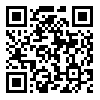BibTeX | RIS | EndNote | Medlars | ProCite | Reference Manager | RefWorks
Send citation to:
URL: http://jorar.ir/article-1-234-en.html
Introduction: Public education is considered as one of the most important methods for preventing and coping with natural disasters. So, providing a model for designing and implementation of these trainings is of great importance. This study aimed to do this.
Method: This was an applied research with a combined method of data gathering. In qualitative part of the survey, the research tools were organizational documentations and semi-structured interviews with focus groups while in quantitative part questionnaire was used. Research population consisted of experts in public education, administrators and population planners. Purposive sampling was used to reach theoretical saturation of the data. To validate the model, 17 participants answered the questionnaire. In qualitative part, validity was confirmed by the participants and in quantitative part, content validity method was used. The reliability was approved obtaining Cronbach's alpha of 0.98.
Findings: Public education was imperfect in terms of organization, regulations, structure and process. A public education model ba
Conclusion: ba
| Rights and permissions | |
 |
This work is licensed under a Creative Commons Attribution-NonCommercial 4.0 International License. |





